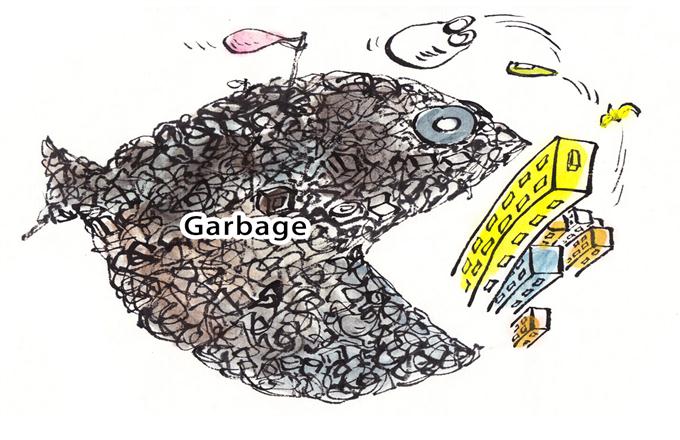Attaining an olive-shaped society
Workable measures should be drafted to increase the size of the middle-income group by two percentage points each year
At the 18th National Congress of the Communist Party of China in November, a commitment was made to continuously expand the middle-income group. In February, the State Council issued a notice on deepening reform of the country's income distribution system to gradually form an olive-shaped income distribution structure as part of ongoing broader reforms.
At a time when the country faces contracted demand because of the global economic woes, the expansion of the middle-income group will help China tap its enormous consumption potential and boost its dampened domestic demand. At the same time, it will also facilitate the country's efforts to eradicate imbalances in its social structure, narrow the gap between the rich and poor, iron out ever-growing interest contradictions and promote social harmony and stability.
Although no detailed plans and systematic designs have been released, the fact that the expansion of the middle-income population has been raised at the national level means that the government is expected to work out a series of feasible and practical measures to fulfill this task as soon as possible.
To do so, the government should draft concrete and workable programs to double the incomes of people in the middle-income group as part of its national strategy. This will inevitably involve sweeping social and economic reforms. On the basis of the national income distribution reform, some concrete arrangements aimed at increasing the incomes of people in the middle-income group should be made as early as possible.
At the 18th national congress, the authorities vowed to double the incomes of urban and rural residents from the 2010 level by 2020. But such an increase in income levels should not come at the cost of further widening the country's wealth gap. The goal of doubling incomes should be based on first expanding the size of the middle-income group and doubling the incomes of this group. A detailed timetable should be mapped out to achieve this.
For example, the middle-income group now comprises about 23 percent of the total population. A practical and viable plan should be drafted to increase the size of the middle-income group by two percentage points every year in the coming years. This, if realized, will expand the country's middle-income group to 40 percent of the population by 2020.
The rise in middle incomes is a comprehensive index that reflects not only the progress in China's national economic development, but also the progress it has made in its endeavor to narrow the chasm between the rich and the poor and its efforts to build a harmonious society. Given that it is more meaningful to increase the incomes of people in the middle-income group rather than simply expand gross domestic product, the central government should regard such efforts as a key part of the country's economic and social development and encourage local governments to do the same.
China is well poised to expand its middle-income group, but viable measures are now needed to do so. China should increase its structural tax reduction efforts and launch a large-scale tax-cutting plan. There should also be a curb on the rapid growth of the government's fiscal revenues and effective controls on administrative costs.
Efforts to incorporate migrant workers into cities as urban residents should be accelerated. To this end, the government should increase fiscal inputs into the construction of basic public services. At the same time, systematic arrangements aimed at helping migrant workers attain the status of urban residents should be made as soon as possible so that a new urbanization pattern can take shape.
China's land system should also be reformed so farmers gain from the increased value of their land. As part of a near-term reform program, the country's prevailing rural land acquisition system should be changed to give farmers a bigger say in land transfers and ensure they make bigger gains from them.
The country should also push forward institutional reforms of its problem-riddled capital market and especially reform of the system of cash bonus in listed companies.
An expanded middle-income group will push forward the upgrading of China's consumption structure and play a particularly important role in guiding its industrial structural upgrading. Increased consumption from such a group will also offer more employment opportunities to people in the low-income group.
An expanded middle-income group will help China form an olive-shaped income distribution structure and cement its intrinsically driven economic growth capability.
The author is president of the Hainan-based China Institute for Reform and Development.
(China Daily 03/06/2013 page9)





















